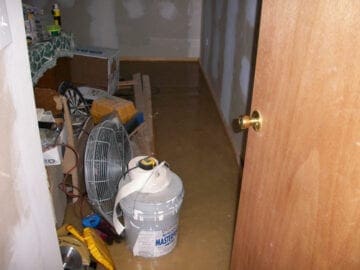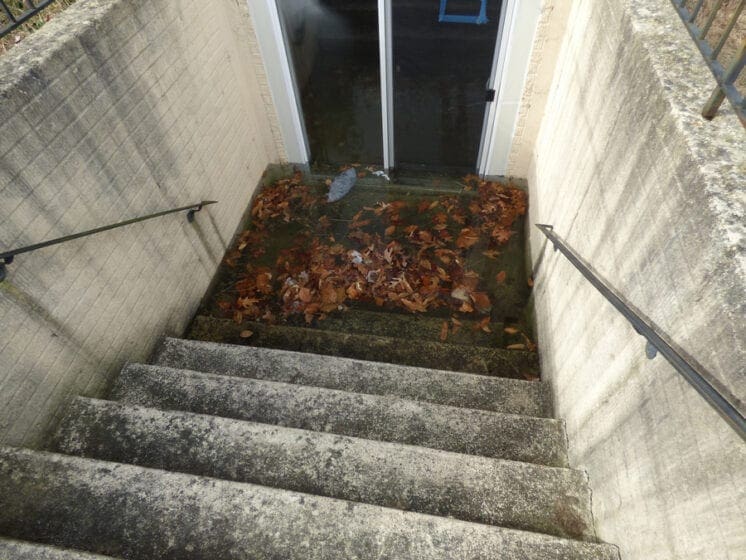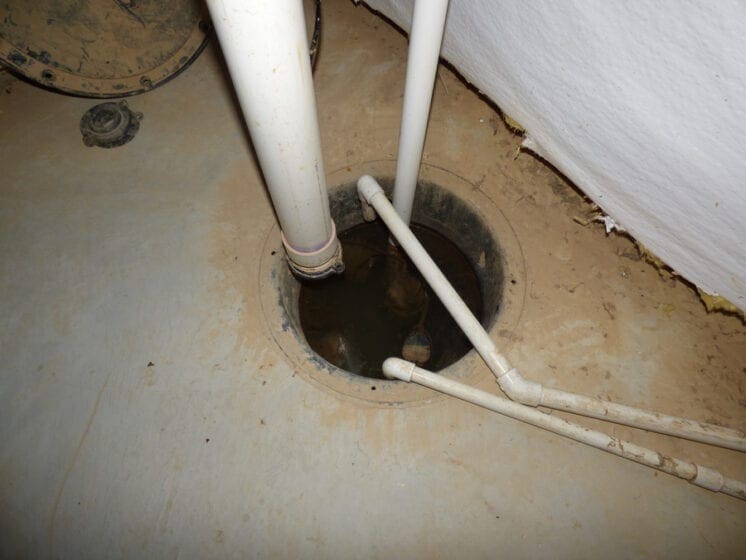Easy Ways to Help
Prevent Home Flooding
Flooding in a home is a very real possibility for millions of households. The damage that water can do is extensive. The Insurance Information Institute said that water damage is the second most common claim for homeowners. These claims account for about 1 in 60 insured homes. The average expense for repairs is $11,065 per claim. When most people think about water damage, they think about hurricanes and major floods from severe thunderstorms and massive rain events. The truth is, though, that most water damage comes from smaller things like leaking appliances or pipes, or water intrusions over time, rather than a single catastrophic event.
We have worked with many properties that had flood damage. Over the years, we gained a lot of experience in preventative maintenance. This led to the development of our Homeowner Concierge Repair Service. The licensed contractors we use have protocols for resolving flood damage. It can easily cost thousands or even tens of thousands of dollars to remedy flood damage in a home.
While it is impossible to eliminate the potential for ALL flooding, there are steps that you can take to prevent water from damaging your home and your quality of life. Most of them are simple home maintenance things. Nobody knows when a flooding issue will happen. Regardless of whether you own a home or rent, it’s a good idea for you to expect the unexpected and prepare in advance.
This is our guide of easy ways to help prevent flood damage. Most of these tips apply to homes with basements. Unfortunately, people who live in a flood plain (coastal or inland rivers and streams) have additional issues.
 |
 |
Clean Drains at Basement Doors
The most common culprit with water entering a home happens because of clogged drains. Cleaning drains periodically is the quickest thing you can do to prevent home flooding. Leaves and plant debris can accumulate both on the top of your drain but also get inside of the pipe over time. You can clear a drain cover in less than a minute.

Depending on the house, these drains may dump out water at the street. Many times, though, they will dump water into the sump pump. The sump pump then ejects the water out of the house. This step keeps drain lines flowing and water moving away from your home while it is raining. If it becomes necessary, you should consider having drain lines snaked. This will keep them from clogging when you need them the most.

Caulk and Seal Your Home
Making sure your home is properly caulked and sealed is the next easy maintenance item to prevent flooding. This includes a variety of locations based on the unique characteristics of your home. Poor or failing caulk can allow water to get into your home through vulnerable areas. The most common areas that need caulked are around windows and doors. You can also have cracks in mortar or cement that allow water in.
Properly sealing your home starts by checking caulk, mortar, cement, and weather stripping. If you notice holes or areas where the caulking is old or poor quality, you should consider having it fixed. We can recommend several licensed home improvement professionals in our Business Directory.
Inspect and Maintain your Roof
Damage from issues on the roof will become obvious with discoloration (usually brown spots) on the ceiling. This is a sign that water infiltration into the attic is happening and the water is causing the drywall to deteriorate. Eventually, the ceiling (or part of it) will collapse and water will drip or pour onto the floor. One of the easiest things to fix is the flashing. This seals up edges where water can intrude. When the flashing is damaged, there are many other things that can happen. You may see the roofing plywood, the support structure and possibly even uninvited “guests” who take up residence in the attic. Damage to the flashing can happen due to heavy winds. It’s a good idea to check all around your home after a wind storm.
The other thing you should check is the rain cap or chimney cap. This is something that protects you from rain getting into the chimney. If moisture gets inside, it can damage the internal structure, eat away at the brick and mortar and form rust and deterioration. This could ultimately damage the firebox or crack the flue.
Address Gutters, Downspouts
and Negative Drainage
Negative drainage occurs where water flows toward your home rather than directing it away. It is very easy to identify. Often you can find problem areas during rainy days where water flows or ponds where it doesn’t belong. The most common place you may find negative drainage is close to downspouts, but you can find it anywhere around your home. Once you have negative drainage, it will get worse over time due to erosion. It is best to check around your home for low-lying areas. Adding dirt correctly will raise the elevation in problem areas and direct water away from your home. This will greatly reduce the chance of water damage. Directing water away from your home may also help prevent termites. This type of damage may not become obvious for many years, because water will run down the side of the home. As it does, it will damage the wood and come through the wall. It could ultimately rot through the wall and the floor below.
Downspouts direct a lot of water from your roof through the gutters into concentrated areas. It is important to guide this water away from your home properly. Adapting downspouts to empty water farther from your home is best. You can also turn this into a home improvement project to incorporate decorative rock beds, which may even raise curb appeal to your home. As you address any issue with the gutters and downspouts, you will want to make sure that the foundation and doorways are properly sealed.
Maintain Your Sump Pump
and Install a Battery Back-Up
Most homes with a basement (Colonial, split-level, Split-Foyer) below grade will have a sump-pump installed. Even homes without a basement can have a sump pump. The purpose of a sump pump is to remove ground water from underneath your home. This is done through a series of pipes under the slab or basement floor. This is a vital component in home construction. Often times a sump-pump is an overlooked part of your home’s overall health. It is important to keep this system in working order. The average life expectancy of a sump pump typically ranges from 7 to 10 years.

It is a good idea to test your sump pump during periods of extended inactivity. It is as simple as pouring a few gallons of water into the sump pump pit. This will raise the float and activate the pump to empty the contents. If your sump pump is older, it may be time for it to be replaced.
We have dealt with many homes that did not have a battery back-up in place for the sump pump. We believe that it is a good idea to consider the benefits. A sump-pump will only work as long as your home is receiving electricity. When severe weather strikes and you lose power, your sump-pump will not protect your basement. A battery back-up system is not as strong as a primary pump. It can operate for up to several hours, depending on how hard it needs to work. In the best-case scenario, a battery backup can save your basement. The battery back-up runs off of a car battery, so in extended outages, you could pull the battery from your car to keep the pump working longer.

Purchase a Generator for Power Outages
Purchasing a generator for emergency use is a more expensive step to prevent flooding. A generator can serve as a vital lifeline for your home’s well-being in the event power is lost for hours or even days. As long as your generator is properly maintained and has fuel, you can keep your home’s primary sump pump in operation. A generator can also power an array of other devices. You can use it to keep your refrigerator running. Depending on the type of generator, it could even run your heating or air conditioning. Today’s generators are more fuel-efficient, offer higher power output and more plugs. It is especially important for people who live in areas that are prone to severe weather, heavy rain, or who are at risk for hurricanes to consider this step.
Final Thoughts about Flooding
It is almost impossible to eliminate the threat of water damage and flooding in your home. There is only so much that you can do to protect your home from big storms. There is water damage that you can prevent, though, and the best way to avoid damage from non-catastrophic events is by paying attention to the systems in your home. When you notice that something changes, take action!
If you follow these simple steps, though, you can greatly reduce the likelihood of it happening to you. You may want to take some time to make sure your homeowner’s insurance covers flood damage as part of your policy. Flood coverage in your homeowners’ insurance should cover you against flooding from Mother Nature, but also damage from broken pipes and may even protect you from sewage back-up flooding. From our experience working with homes during the past 20 years, we believe that it is always better to prevent damage from occurring in the first place where possible.

